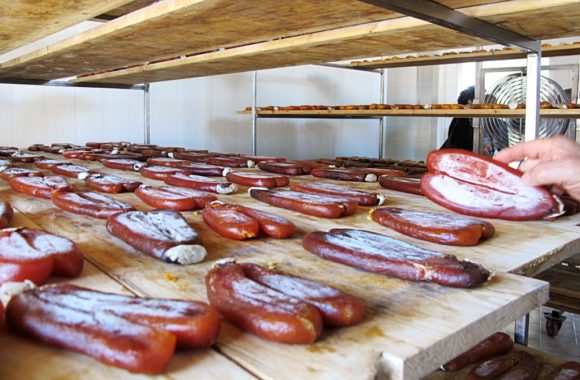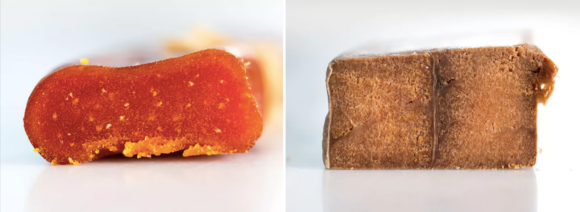Serious Eats makes a serious argument for Bottarga in Sho Spaeth’s piece “Bottarga: What It Is, How to Use It, and Whether It’s Worth It”. The answer to that last question? A resounding YES.
While Bottarga is expensive, a little bit goes a long way. Plus, it keeps indefinitely in the fridge. Whether you slice it thinly, grate it over a bowl of steaming pasta, or crumble it on grilled vegetables, you really can’t go wrong.
What is Bottarga?
Bottarga is the Italian word for cured fish eggs, most commonly mullet or tuna. Once the roe sacks are extracted, they are salted, pressed, and dried to form two elegant orange cylinders. This basic method dates back to the time of the Phoenicians, who spread the practice to the Egyptians and along the Silk Road.

Our Bottarga producer Oro di Cabras doesn’t stray far from the ancient method. Oro di Cabras in Sardegna still allow their mullet bottarga to dry naturally on wooden boards for 15-30 days.
Almost anywhere humans fished, it seems, once they learned of this preservation technique, they extracted fish roe sacs and salted and dried them to produce a deeply savory pantry staple that’s resistant to rot.
How is it used?
One historic mention of Bottarga comes from a Samuel Pepys’ diary entry on June 5th, 1661, where the author and a friend “staid talking and singing, and drinking great drafts of claret, and eating botargo and bread and butter till 12 at night.”
Modern Bottarga is pretty much the same as it was back then and can be eaten in the same ways. Here at Gustiamo, we like to use it for pasta con la bottarga, or as a replacement for tahini in hummus bottarga. But really, its uses are endless. Sho Spaeth suggests treating it much as you would a prized piece of parmigiano reggiano, grating it over anything to add a savory richness.
The only note of caution I’ll provide is you should avoid cooking bottarga. […] you can gently warm it, but given its delicate flavor and its high cost, it would be a waste to, say, sauté grated bottarga along with a sofrito.

The most common and widely appreciated variety of bottarga comes from grey mullet. It’s prized for its delicate flavor and texture. However, some prefer the intense fishy richness of the tuna version. This rare delicacy has a softer consistency and a stronger flavor, but keeps just as long.
A word about that pellicle: It is in fact the membrane that encapsulates the roe sac, which turns papery during the process of curing and drying. While it is not absolutely necessary to remove it, it is preferable.
Read Sho Spaeth’s full article on Serious Eats here.
